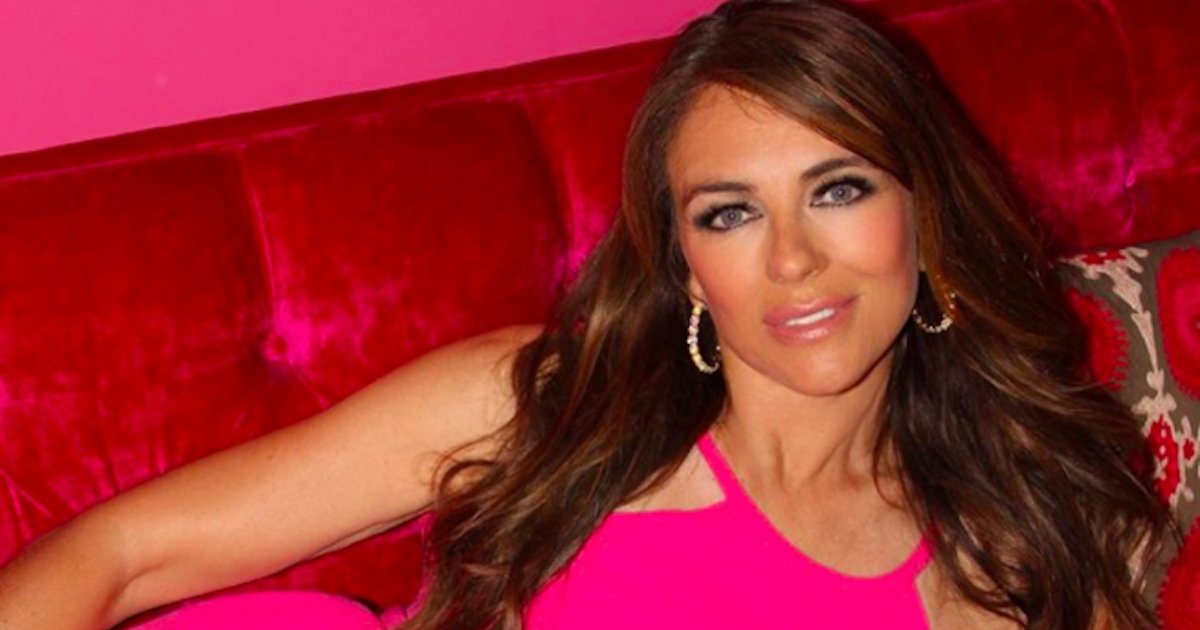We like to celebrate members of the cancer community who are giving back. That includes all of su who are connected to these diseases. Elizabeth Hurley turns 55 today. For over 25 years, she’s served as a global ambassador for the Estee Lauder Breast Cancer Awareness Campaign. But her connection to the disease goes deeper than her closetful of pink evening gowns: In 1992, her grandmother died of breast cancer, after keeping the disease secret from her family.
Read More"It wasn't until I started to learn about breast cancer [through Evelyn Lauder] that I began to feel so angry that I hadn't known more at the time. We know that if a cancer is found and treated early, there is a 95% chance of recovery," she said.
In May, Hurley helped raise over $5.2 million for breast cancer research from home, Zooming into the BCRA’s Virtual Hot Pink Evening. “Every 2 minutes, a woman somewhere is diagnosed with breast cancer,” Hurley said in an impassioned Instagram post. “Breast cancer doesn't stop for COVID-19 and neither can we.”
The night was dedicated to Broadway star, Mandy Gonzalez, who was appearing in “Hamilton” when she was diagnosed with breast cancer. "It was most important to not let cancer define me or stop me," Gonzalez said via video to the crowd watching at home.
"So during chemo, I had the privilege to continue my job playing Angelica Schuyler in Hamilton on Broadway eight times a week.”
Breast Cancer Risk Factors
We often hear that the lifetime risk for breast cancer in any woman is about one in eight, but that statistic doesn’t tell the whole story.
RELATED: Mother-Daughter Dream Team, Diagnosed Two Weeks Apart, Battle Breast Cancer Together
The risk varies in every age group and breast cancer becomes increasingly more common as women age. At age 30, for instance, the risk is one in 227, according to the National Cancer Institute. By age 70, the risk is one in 26.
While the key risk indicators are age and family history, there are a whole host of risk factors, many of which our medical advisor Dr. Elizabeth Comen covers in this video.
The American Cancer Society breaks risk factors into two groups: Lifestyle factors, like being overweight and not having children and inherited factors, like genes and race.
Who Should Get Genetic Testing?
About 10 percent of breast cancers are hereditary, says Dr. Ophira Ginsburg, Director of the High-Risk Cancer Program at NYU Langone's Perlmutter Cancer Center. That's why she recommends genetic testing for women with specific risk factors related to family history:
- Family history of rare cancers
- Family members with breast or ovarian cancer
- History of cancers associated with the Lynch Syndrome
- History of common cancers diagnosed at a young age.
If you do have this family history, Dr. Ginsburg recommends asking about your cancer center's hereditary cancer program and/or finding a genetic counselor through the National Society of Genetic Counselors (NSGC ) to discuss what kind of genetic testing is right for you.
The Breast Self-Exam: Getting It Right
When combined with regular medical exams, mammography, and — in some cases — ultrasound and/or MRI screening, breast self-examination is an important screening tool. Each works in a different way and has strengths and weaknesses, according to Breastcancer.org which offers these guidelines for self-exams:
Step 1: Begin by looking at your breasts in the mirror.
Stand with shoulders straight and arms on hips, and look for the following:
- Breasts that are their usual size, shape, and color, evenly shaped without visible distortion or swelling.
- If you notice dimpling, puckering, or bulging, bring this to your doctor’s attention.
- Also check with your doctor if a nipple has inverted or changed position; or you see redness, soreness, a rash, or swelling.
Step 2: Now, raise your arms and look for the same changes.
- While facing the mirror, look for any signs of fluid coming out of one or both nipples.
- This could be a watery, milky, or yellow fluid– or blood.
Step 3: Next, feel your breasts while lying down:
- Use your right hand to feel your left breast; your left hand to feel your right breast. Use a firm, smooth touch with the first few finger pads of your hand, keeping fingers flat and together. Use a circular motion, about the size of a quarter.
- Cover the entire breast from top to bottom, side to side from your collarbone to the top of your abdomen, and from your armpit to your cleavage.
- Follow a pattern to be sure that you cover the whole breast. You can begin at the nipple, moving in larger and larger circles until you reach the outer edge of the breast. You can also move your fingers up and down vertically, in rows, as if you were mowing a lawn. This up-and-down approach seems to work best for most women.
- Be sure to feel all the tissue from the front to the back of your breasts: for the skin and tissue just beneath, use light pressure; use medium pressure for tissue in the middle of your breasts; use firm pressure for the deep tissue in the back. When you’ve reached the deep tissue, you should be able to feel down to your ribcage.
Step 4: Finally, feel your breasts while you are standing or sitting.
- Many women find that the easiest way to feel their breasts is when their skin is wet and slippery, so they like to do this step in the shower.
- Cover your entire breast, using the same hand movements described in step 3.
Learn more about SurvivorNet's rigorous medical review process.


